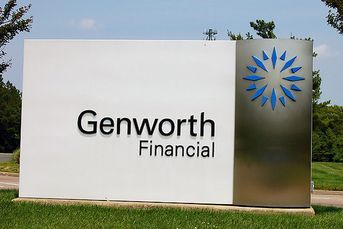Creating a structure for making gains while minimizing risk
The recovery of the stock market in the last two years has been driven by investors willing to take on risk again
The recovery of the stock market in the last two years has been driven by investors willing to take on risk again. But many of those investors haven’t forgotten the trauma of 2008, said Philip Moses, a financial adviser with Raymond James Financial Services Inc. who manages about $200 million in assets through an advisory practice at the First Federal Bank of Florida.
“Clients are still very sensitive to risk,” said Mr. Moses. “They appreciate defensive strategies that minimize their risk.”
Part of the defense he recommends is to diversify among more asset classes, making greater use of alternative investments such as long/short funds, funds of funds, managed futures and, especially, various structured products.
One popular alternative is equity-linked certificates of deposit that Mr. Moses arranges with Raymond James and participating banks. Clients can choose an index they want exposure to, and participate in 80% of gains, while their initial investment is guaranteed by the Federal Deposit Insurance Corp.
Another such note guarantees a 7% return over 15 months as long as a selected index doesn’t drop more than 25%. If it does, the investor loses the percentage drop, minus the 7%. If the index falls less than 25% or goes up, the investor still gets the 7% return.
A 25% drop in a sector index or the broader market in a 15-month period is a rare event. Of course, the 2008 market crash is a notable exception. And with that experience still burned in their memories, many investors are looking for structured products to hedge their losses.
The contracts aren’t limited to equities exposure. Similar products can be structured to participate in fixed-income, currency or commodites markets. Some of them require extra work by the adviser or bank to duplicate a benchmark index. For example, commodity-linked certificates may require a covered-call option-writing strategy to mirror a market price or index more closely.
But whatever the structure of the product, the common theme is loss avoidance. “People are a lot more concerned with avoiding potential losses than missing out on higher returns,” Mr. Moses said. “Once they’re educated about these investments, clients often consider investing new funds. We’ve added to client portfolios with these products.”
Clients typically want an explanation of how Raymond James can offer these types of products in an environment where 10-year Treasury bonds are yielding less than 3%. Mr. Moses explained that 90% of the money goes to buying the certificate and 10% to purchasing options or futures on the index. The bank can then write contracts for other investors that effectively offset the risk.
“These products are designed for people who are bullish or mildly bearish,” Mr. Moses said. “If they’re extremely bullish, 7% won’t be enough return. If they’re extremely bearish, they’re better in a long-term certificate, possibly equity-linked, but with no risk.”
One significant downside to the investments is that they are illiquid. “The creditor banks make a market in the products, but the offer they make may not be very attractive,” Mr. Moses said. They also don’t come cheap. A 1.25% fee to the adviser and a brokerage fee are embedded in the product. But for investors still hesitant to commit to the equity markets fully for fear of 2008-like declines, structured notes are a good option, he said.
“People were complacent about risk for a long time,” Mr. Moses said. “The financial crisis brought a lot of attention to these products. They can give investors some exposure to equities, but with downside protection.”
Email Andrew Osterland at [email protected]
Learn more about reprints and licensing for this article.




